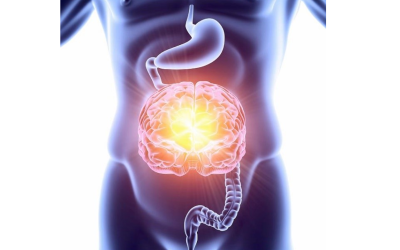Introduction
Psychoanalyst Bill Plotkin, Ph.D. in Wild Mind, writes: “Wholing [cultivation of wholeness of being] is the foundation for true healing. Some degree of personal wholing must precede any deep healing, not the other way around. We must to some degree cultivate our wholeness before we can truly be healed. Wholing comes first and is foundational. Once we get started in our wholing, we can begin Self-healing; and Self-healing accelerates our capacity for wholing. Wholing and healing reinforce each other.”
While Plotkin is referring to deep psychospiritual wholeness and healing, this concept of wholing preceding healing is equally valid for the physical body. A fundamental concept of traditional naturopathy is: Symptoms are local effects of general states. In other words, symptoms such as asthma, arthritis, irritable bowel syndrome or obesity are all localized expressions of a disharmonious general state that involves all the systems of the body, as well as mind and spirit, to varying degrees.
Accordingly, disharmonious operations of the mind/body organism, in general, precedes the localization of a disease state. The functional and organic changes that ensue after localization are the results of the disease, not the disease itself. The actual disease-generating mechanism is an intricately constructed state of disharmony within the systemic milieu of the mind/body organism.
Disturbance of the General State
Human life is dependent upon the presence of certain fundamental conditions, including: proper diet; pure water; fresh air; sunlight; exercise; accommodating climatic conditions; rest and sleep; emotional poise. Health exists in direct proportion to the extent that these conditions are supplied or denied.
The human being has an intrinsic, organic relationship with said fundamental elements, and disease is an outgrowth of a deficiency of one or more of them. Thus, the restoration of health in the ill individual is effected via the identical means of sustaining life and preserving health in the well person, meaning: reestablishment in the ill person’s life of said fundamental factors in accordance with individualized biochemical and constitutional requirements.
Lacking the restoration of these prerequisite conditions for harmonious “wholeness”, surgery and drugs (even natural medicines such as herbs and homeopathy) can act only superficially upon the local symptoms of an underlying disharmonious general state. Hence, attempts at amelioration of localized symptoms without simultaneous efforts to restore the integrity of the general state, will eventually lead to manifestation of the systemic disharmony in some other, and perhaps more threatening, form.
Understanding Symptoms
A second traditional naturopathic principle further lends further clarity to this discussion: Initially, in chronic diseases such as arthritis or diabetes, many of the symptoms are variations of the body’s efforts toward self-cure.
For instance, inflammation (one of the basic defense mechanisms employed by the immune system), night sweats (efforts toward removal of disease-toxins via the skin), excessive urination (effort toward reduction of fluid congestion and removal of disease-toxins) and fatigue (an effort by the body to conserve vital force and essential nutrients needed to resolve the disease), while discomforting and otherwise challenging, nevertheless are, by design, bodily mechanisms of self-cure.
Accordingly, suppression of those symptoms associated with efforts toward self-cure (without a concomitant effort to restore the integrity of the deranged general state that has triggered these self-curative mechanisms) represent a misguided attempt to “cure the cure.” Certainly, in order to reduce suffering and avoid complications such as infection, symptoms such as pain, discharge, weakness, etc. must be therapeutically managed. However, direct treatment of symptoms must be contextualized within a concurrent effort to restore and sustain a harmonious general state.
To reiterate: As symptoms are localized expressions of derangement of the general state, the most efficient way to respond to disease is to concentrate much of the therapeutic response directly upon the general state. Resolution of a local symptom must not be confused with resolution of the disease. The disease belongs to the general state.
In this regard, the great homeopath James Tyler Kent, M.D. (1849-1916), in his Lectures on Homeopathic Philosophy, provides important insight: “It is the sole duty of the physician to heal the sick. It is not his duty to heal the results [symptoms] of the sickness, but the sickness itself…Prescribing [exclusively] for the results of disease causes changes in the results of disease, but not in the sickness [the disordered general mind/body state] except to hurry its progress…Restoring health, and not the removing of symptoms, is the first point. Restoring health has in view the establishment of order in a sick human being; removing symptoms does not have in view the restoration of health of the whole economy of a human being.”
Paradigm Shift
Several decades ago, the field of natural healing arts began to metamorphose. While the use of many of the techniques and substances historically employed in the various natural healing arts persisted, the theoretical basis for their employment has largely transformed from a focus on the “wholism” (described above) to the reductionism that leads to a narrow focus on localized symptoms rather than a person’s general state.
This shift has occurred not because the eternal Laws of Nature have changed. Instead as conventional medicine has established its cultural dominance, the operative theory of natural medicine, whose origins trace back to the ancient physicians, has come to be generally viewed as less valid than a medical science based upon high technology and controlled, often flawed, research studies.
Implicit in this argument is that there is only one real science: standardized, statistic-driven modern science. Accordingly, any science that does not conform to those standards and methods is considered by modern science to be far less exacting, and thus, a non-science. In other words, a science based upon centuries of empirical knowledge (i.e., knowledge derived from extensive practical experience) is considered obsolete by modern research and technology. In turn, this paradigm shift from the empirical attainment of knowledge to the statistical method has also shifted the philosophy of practice from individualization (individualized care) to standardization (standard of care). This, while there is certainly no such thing as a “standard body.”
Empirical Knowledge
Acupuncture

Figure A: Ancient diagram of the Stomach meridian
The term empirical derives from empeiria, the Greek word for experience.
Empirical knowledge refers to understanding that is acquired through observation and individualized experimentation.
Ancient systems of medicine, such as traditional naturopathy, Chinese medicine and Ayurvedic medicine, whose validity has been demonstrated countless times over the course of thousands of years, is largely based on the practical experience of their practitioners, rather than modern laboratory experimentation and research studies that characterize their statistical method for the purpose of developing “standardized” drugs to be sold to millions of people with, of course, “non-standard” bodies.
For instance, the art of acupuncture originated in China at least 4,000 years ago. In acupuncture practice, needles are inserted into various acupuncture points situated along meridians or channels. According to Chinese medicine, “chi” (vital force) circulates through channels, or meridians, throughout the body. The major channels often follow the cardiovascular circulatory routes with a network of progressively finer tributary branches permeating and supplying chi to all the cells of the body. There are 12 major symmetrical, bilaterally paired meridians (i.e., 12 on the left and an identical set of 12 on the right), 6 of which run along the arms and body, and 6 which run along the legs and body.
Have you ever wondered how the ancient Chinese established the existence of these channels (see Figure A, above) and subsequently mapped their routes empirically without the use of modern technology?
One of the ways they did so was through close and repeated observation of what is referred to as propagated sensations. In other words, after the accurate insertion of a needle into an acupuncture point, the person being needled (especially if he or she was particularly sensitive) would describe to the practitioner the direction that the pain-sensation extended from the site of insertion. For instance, the pain-sensation of a needle inserted into an acupuncture point on the back of the hand might extend all the way up the arm to the neck and head, revealing a specific chi pathway to the practitioner. Thus, here is a healing art that has demonstrated its efficacy over the course of four millennia, which is based almost entirely upon empirical knowledge.
True Nature of Fever
Another example of the scientific legitimacy of empirical knowledge involves the symptom of fever. The ancient Greek physician Hippocrates (460 –370 BCE), considered to be one of the towering figures in the history of medicine, is referred to as the “father of western medicine.” That is why all medical doctors take the Hippocratic Oath. However, Hippocrates is more accurately identified as a traditional naturopath than an early modern medical doctor. Hippocrates famously stated: “Give me fever and I can cure any disease.” He came to this conclusion empirically.
Fever is one of the primary physiological mechanisms, which the body uses during disease (especially acute diseases such as the flu) to detoxify and self-heal. Nineteenth century naturopath R.T. Trall, M.D, in his Handbook Of Hygienic Practice (1864), wrote: “As fever is part of disease and disease [particularly acute disease] is an effort toward purification, fever must be one of the methods by which the system relieves itself of morbid matter.”
In other words, before the modern era, physicians empirically deduced that fever was a manifestation of the body’s inherent cleansing and healing efforts. Therefore, while they employed measures to keep a fever within constructive limits (e.g., hydrotherapies and herbal medicines), it was otherwise allowed to run its natural course. This understanding is not limited to the human species. Infected fish swim to warmer water to raise their body temperature and thus destroy infectious microorganisms. Similarly, to combat infection, lizards crawl into the sunshine to raise their body temperature.
Modern physicians are aware that fever is an instrument of the body’s inherent self-healing mechanism. Nevertheless, instead of using it to the ill person’s advantage, they suppress it with medications such as aspirin, because fever, a symptom of a disease but not the disease itself, has come to be viewed solely as an all down-side threat and discomfort – a pathological, rather than a potentially curative physiological, process.
When fever and other acute manifestations such as sneezing and coughing are reflexively suppressed with drugs, the toxic matter, which the natural forces of the body are endeavoring to eliminate, is forced back into the tissues where they may sow the seeds for the development of more pernicious and intractable chronic disease somewhere down the line. Certainly, uncontrolled fever can be very dangerous, even fatal. The ancients were well aware of this. What they were espousing was a strategy to control a fever while still permitting it to do its healing work, rather than complete suppression that obstructs one of the body’s most fundamental efforts toward self-cure.
Here, we see the practitioners of old providing timeless knowledge about the true nature of health and disease, based upon practical experience.
Connecting Therapeutics to the Laws of Nature
After decades of resisting the idea that dietary habits play any role in the development of diseases–forced by a mountain of irrefutable evidence and a continuously growing informed public–modern medical science now endorses the idea that lifestyle factors, such as poor diet and sedentary behavior, play an important role in the etiology of most illnesses.
Nevertheless, medical science still focuses primarily on suppression of the effects of egregious lifestyle factors rather than upon their modification or elimination of such factors. This not only allows the clandestine operations of these disease-causing factors to continue, but also engenders the nearly universal tendency to confuse symptom for disease. For instance, Type 2 diabetes, which has become a scourge in the modern era, is a “symptom.” The actual disease which gives rise to it is most commonly neuroendocrine dysregulation fostered by a combination of poor diet and associated nutritional deficiencies, sedentary behavior, emotional stress and obesity.
Certainly, modern scientific understanding and advances must be factored into the practice of natural medicine, but that must be done in a way that does not disturb the connection of a healing art to the laws of Nature. Indeed, those new understandings and advances must be interpreted in a way that amplifies our obedience to those laws rather than providing a means of containing the outward effects of their ongoing violation.
Wholism vs. Reductionism
So how did modern healthcare become so estranged from the natural world and the Laws of Nature? One primary factor in this unfortunate detour is its forsaking of wholism in favor of reductionism.
Many of the traditional natural healing arts were originally grounded within the wholistic understanding that all phenomena within the natural world, and thus, within the human organism, are thoroughly interactive and interdependent. Therefore, Heaven and Earth, person and mind, and body and spirit, are all indivisible. Extrapolating from the understanding of this inherent unity, human physiology and pathology can only be understood within the context of their indivisibility from mind and spirit as well as from the elements of the natural universe.
Ancient Chinese medicine was based entirely on a wholistic paradigm. Accordingly, human existence was seen as being the result of cosmic organizing principles that permeate both the spiritual and material realms. Thus, no living organism, nor the components of any living organism, are independently operative. All natural phenomena exist in a complex fabric of relations, which are inherently “non-reducible.”
This concept of perpetual inter-relation among all the components of the natural world is expressed eloquently by Joseph Needham (1900-1995), a British scientist famous for his research and writings about the history of Chinese medicine. In Science and Civilization in China, Volume 2 (1956), Needham describes one of the fundamental understandings of the ancient Chinese practitioners: “Things [i.e., phenomena within the natural universe] behave in particular ways because their position in the ever-moving cyclical universe is such that they are endowed with intrinsic natures which make that behavior inevitable for them. If they did not behave in these particular ways they would lose their relational positions in the whole, which made them what they are, and turn into something other than themselves. They are thus parts in the existential dependence within the whole world-organism. And they react upon one another not so much by mechanical causation as by a kind of mysterious resonance.”
In contrast, reductionism: the mainspring of western medicine infers that the best way to understand a phenomenon (e.g., blood circulation) is by reducing it to its separate component parts. These parts are then studied in isolation from the whole. In this reference, William James, M.D., the great 19th century psychologist, physiologist and philosopher writes in The Principles Of Psychology (1918): “[Modern] Scientific thought goes by selective emphasis exclusively. We break the solid completeness of fact into separate essences, conceive generally what only exists particularly and by our classifications, separate the contiguous [naturally connected together forming an unbroken sequence or an uninterrupted expanse] and leave nothing in its natural neighborhood…However, reality exists as a plenum [space entirely filled with matter]. All its parts are contemporaneous [existing and active at the same time], each is as real as any other, and each as essential for making the whole just what it is and nothing else.”
Essentially, modern science’s rationale for reductionism is that the parts of the whole are infinitely diverse and interactive and so defy linear rationale understanding. Only when the parts of the whole are separated and viewed in isolation can their properties be ascertained. Subsequently, a model is constructed wherein all these determined properties of the separate parts are combined in a practically useful way.
There is no question that reductionism, if properly employed, has a role to play in scientific understanding (e.g., intra-cellular functions). James observes: “The order of nature as perceived at a first glance, presents at every instant a chaos followed by another chaos.” However, and this is crucial, James qualifies his argument for reductionism by adding that in order to make an assessment of all this derived data that reflects the true nature of a given phenomenon: “The real world as it is given at this moment is the sum total of all its beings and events now. Nothing else is the real order of the world.”
James deftly frames the issues regarding the study of the infinite complexity of all the forces and phenomena of the natural universe that shape human existence in general and human health and disease in particular. There is a need to study components in isolation and not only medical science, but traditional natural medicine as well, does just that. However, simply conducting these studies within the bounds of rationale intellect, rather than within the context of the Laws of Nature, leads to incomplete and distorted conclusions.
Clearly, modern medicine demonstrates brilliance in its study of separated physiological components. However, regarding health and disease, those components identified through reductionism must subsequently be contextualized within the infinite weave of the fabric of the natural universe that invariably constitutes their actual reality.
Only when reductionist investigation merges its determinations with the laws of Nature does it reflect reality. If not, their value is limited by their isolation from the wholeness that characterizes the universe and the operations of the human organism.
This brings us back to John Needham’s point that it is the relational positions of individual components in the whole (which, of course, make them what they are) and separation of them from the whole turns them into something other than themselves. In other words, understanding the true nature of the heart, liver, kidneys, an herb, an essential nutrient etc. is completely dependent upon studying each of them within the context of the whole – thus, mind/body/spirit and Heaven/Earth/human being. Straying from this, our perception of them is distorted and we “turn them into something other than themselves.”
Mastic (Pistacia lentiscus)
Note: The discussion that follows regarding the properties of mastic and mastic oil is largely excerpted from Berkowsky’s Synthesis Materia Medica/Spiritualis of Essential Oils.
The herb (and essential oil) mastic (Pistacia lentiscus) provides a good illustration of this divergence from wholism to reductionism. Mastic has been prized since ancient times for the semi-transparent, off-white to yellow natural resin it begins to exude when it is five to six years old.

Mastic resin is an opaque, crystalline, solid oleoresin that consists primarily of triterpenes and contains between 1 to 3 % essential oil. Mastic resin and oil have remarkable antibacterial and fungicidal properties. The December 1998 issue of the New England Journal of Medicine reported that mastic exerts an antibacterial action against six pathogenic species, including staphylococcus. It was also shown to be an anti-fungal agent that destroys Candida albicans.
In the U.S. and Japan, a medicine made from mastic is used to treat stomach pain and gastric ulcers. Regarding the latter, its effectiveness is due in part to its ability to inhibit the bacteria Helicobacter pylori, which has been shown to play a role in the development of gastric ulcers. Mastic gum has also been shown to be an effective treatment for duodenal ulcers.
All of this research-derived information about mastic demonstrates the clinical usefulness of reductionist investigations. However, if we restrict our view of mastic to its chemistry, we reduce the herb from a “Thou” (an inspirited living organism) to an “It” (non-inspirited matter), and, in so doing, we greatly limit its healing potential.
Contrast this limited chemistry view with the determination of the ancients that mastic encourages clairvoyance, intuition and spiritual visions. In the traditional medicine of Ancient Greece and the Arabs, mastic was prized because it both exerted a direct physical effect upon disease symptoms and its scent encouraged powerful positive visualizations among those at the patient’s bedside that invigorated the healing energy in the sickroom environment. In traditional Moroccan medicine, a healer treating a sick child inhales the scent of mastic and visualizes the plant’s aura enveloping the child like a protective shield.
Of course, nothing like this will be observed in an American hospital. Not because mastic exerts these actions only in Morocco, but because western science has separated mind from body and views spirit as only having theological relevance.
Conclusion
Anyone who has spent time in a hospital, as either a patient or visitor, is likely to have been dismayed by how divorced that environment is from the natural world. It is an impersonal place of disease-care based upon intellect-driven standards and statistics, rather than of health-creation based upon ongoing connection with the natural and spiritual worlds.
True health is synonymous with wholeness of being. Disease is the consequence of living in fragments, separated from nature and from spirit. At one time, healing was viewed as being made whole again. It is illogical to assume that the disconnected treatment of parts would have the potential to restore wholeness. Now, the term “healthy” has come to be defined as a state wherein drugs, surgical procedures, etc. effectively suppress symptoms of disease to the degree that a person can continue to violate the laws of Nature with impunity while the disease, like an underwater volcano, continues to clandestinely build destructive pressure.
Clearly, it is time to reverse the centuries-old paradigm shift from wholism to reductionism. If not, there is no question that human society in general, and human health in particular, will continue to trend toward depersonalization and “dis-ease.” Remember, wholing precedes true healing, not vice versa.









